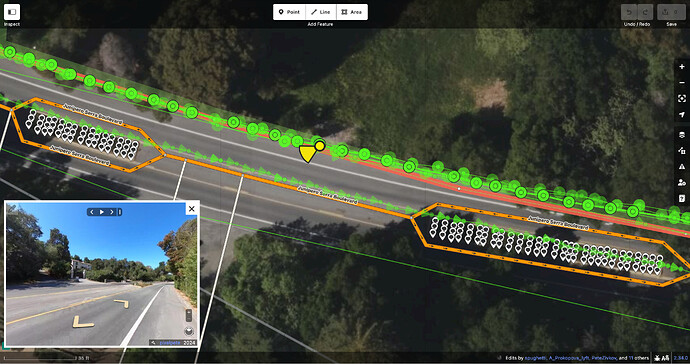Extra effort is a good reason not to absolutely strictly require short parallel ways – not to consider a single way to be an urgent error. However, it isn’t really an argument against mapping parallel ways. The very act of mapping requires lots of extra effort compared to not mapping. ![]()
Granted, the physical separation principle can sometimes result in seemingly absurd geometries, especially when a certain mapper (![]() ) micromaps the contents of the median to prove a point. Just outside the Stanford University campus, Junipero Serra Boulevard used to have a continuous center turn lane down the middle. Wherever there’s a center turn lane, we must map a single carriageway, because cars can enter and leave the lane at any arbitrary point, just like on a multi-lane road. However, this lane was later interrupted by a series of short landscaped medians for traffic calming and beautification.
) micromaps the contents of the median to prove a point. Just outside the Stanford University campus, Junipero Serra Boulevard used to have a continuous center turn lane down the middle. Wherever there’s a center turn lane, we must map a single carriageway, because cars can enter and leave the lane at any arbitrary point, just like on a multi-lane road. However, this lane was later interrupted by a series of short landscaped medians for traffic calming and beautification.
It looks downright silly in renderers that draw highway=primary as relatively narrow lines:
All I can say is that it’s accurate, albeit unfortunate. A renderer that needs a more realistic representation of the street could choose to draw streets thicker, obscuring the alternating effect, or something could smooth out the street’s overall geometry in postprocessing. After all, we tell data consumers to do postprocessing if they want to model vehicle movements and dislike that our link ways start too close to the gore. Otherwise, if we remap this street as a single carriageway continuously, then the features inside the medians would have an ambiguous relationship to the street.

